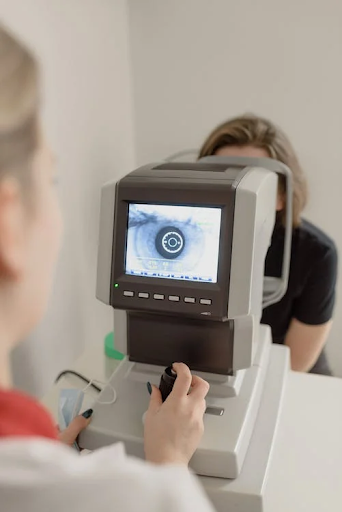How do retinal tears happen and who is at risk?
Most retinal tears occur spontaneously from movement and pulling of the gel inside the eye (vitreous). Even so, the following risks factors may increase the likelihood of developing retinal detachment:
-
A high degree of nearsightedness (myopia)
-
Advanced age
-
Lattice degeneration (thinning of the retina that happens over time)
-
Family history of retinal tears or detachment
-
Eye injury or trauma
-
Participation in sports that have a high risk of head injury
-
Prior eye surgery
Types of retinal detachment
-
Rhegmatogenous: Rhegmatogenous retinal detachment usually happens as you get older. As the texture of the vitreous in your eye changes, it may shrink and thin out, pulling on the retina and then tearing it.
-
Tractional: Diabetes is a common cause of tractional retinal detachments. The prolonged high blood sugar levels can damage blood vessels in your eyes, scarring your retina.
-
Exudative: Exudative retinal detachment happens when there is a fluid buildup behind the retina, pushing the retina away from the back of the eye and causing it to detach.
What are the symptoms of Retinal Detachment
Symptoms of retinal detachment may be more noticeable to some than others, depending on severity. If a larger part of the retina detaches, you’re more likely to notice:
-
Flashes of light (photopsia)
-
A lot of floaters
-
A darkening or shadow covering part of your vision
-
Blurred vision
How is retinal tear & retinal detachment detected?
An eye exam by an eye specialist is required to diagnose retinal detachment. Eye drops that have the effect of dilating or widening the pupil will be administered by your eye doctor. Following this, your ophthalmologist may suggest further tests to have better details of your retina. The tests are:
-
Optical coherence tomography (OCT) - A non-invasive imaging method that uses reflected light to create pictures of your retina.
-
Eye (ocular) ultrasound - An imaging technique that uses high-frequency sound waves that can be used to create images of the retina.
What are the treatments for Retinal Detachment
Your eye specialist, such as those at Eyecentric, will discuss treatment options with you if tests show a detached retina or a retinal tear forming. Treatment will usually stop your vision from getting worse. The treatments are:
-
Laser therapy (thermal) or cold therapy (cryotherapy) - Your eye doctor may use one of these treatments depending on the location of the tear in your retina. Ophthamologists may also use these treatments as part of surgery to repair a detached retina.
-
Pneumatic retinopexy - In this treatment, an expanding gas bubble is injected into your eye that will push the detached area against the back of your eye. A freezing device is then used to seal the retina against the wall of the eye.
-
Vitrectomy - The vitreous will be surgically removed, and the doctor will place a bubble of air, gas, or oil in the eye to push the retina back to its original place.
How do I prevention Retinal Detachment
You can’t prevent retinal detachment, but here are some steps you can take to lower your risk:
-
Regularly go for vision screening
-
Practise eye safety by using safety goggles or other protection for your eyes when playing sports or other risky activities
-
Get prompt treatment
When to see a doctor
Seek immediate medical attention if you are experiencing the signs or symptoms of retinal detachment. Retinal detachment is a medical emergency in which you can permanently lose your vision.
At Eyecentric, based at Bukit Tinggi Medical Centre (BTMC), you are under the best care of trained eye professionals guiding you through your concerns and providing the best advice to maintain your vision. Schedule an appointment with our professional optometrists and ophthalmologist should you have any queries on your eye health.





